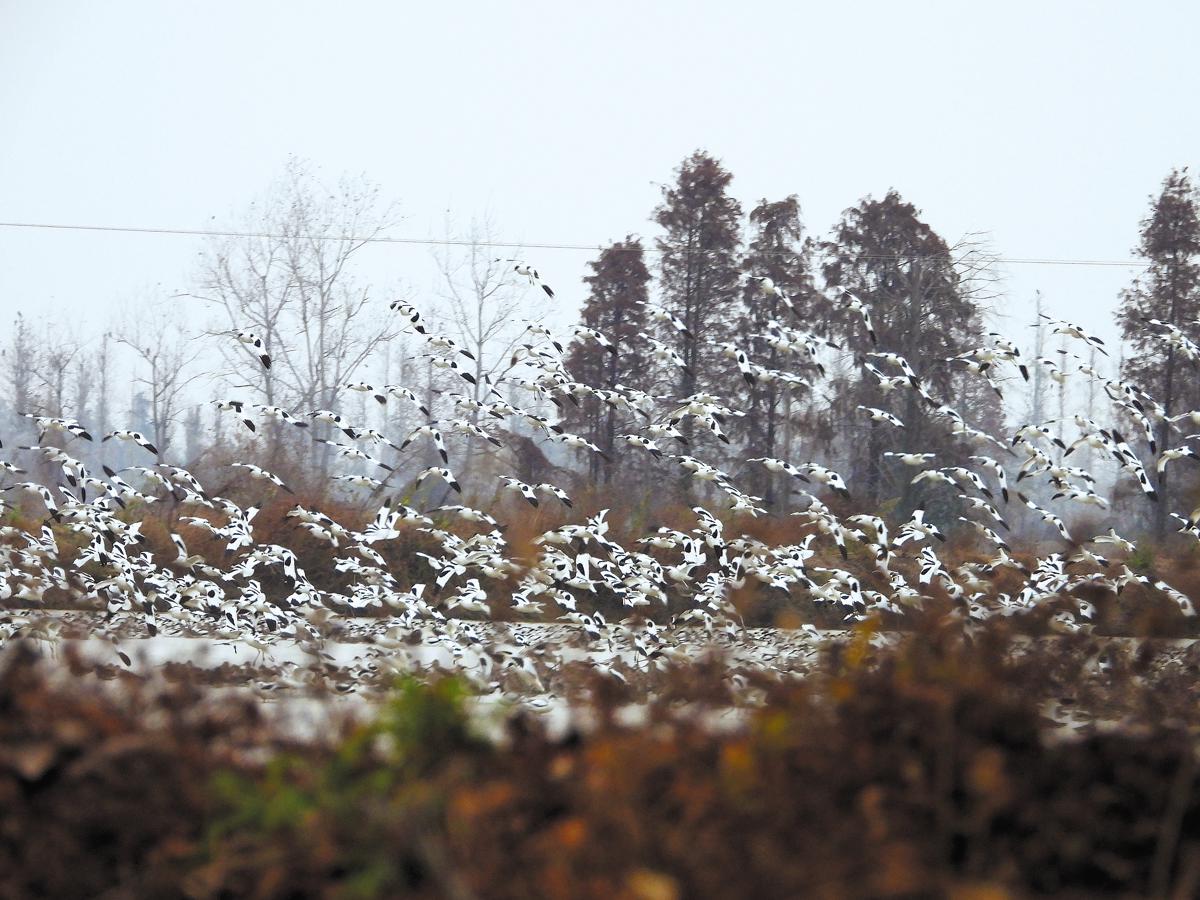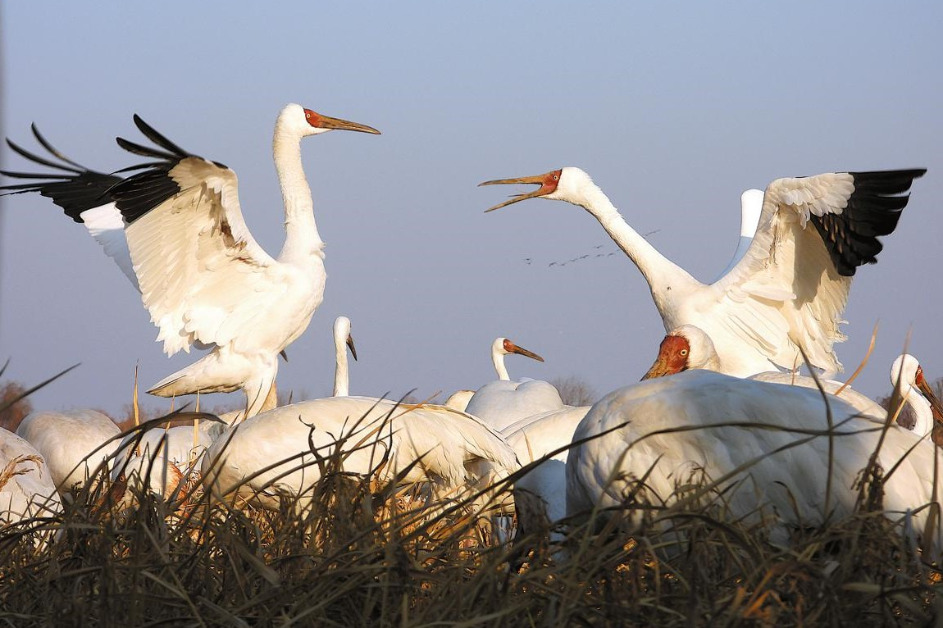Siberian cranes adapt to climate change
As droughts, floods hit Poyang Lake, endangered birds take to farms as food source

Editor's note: As protection of the planet's flora, fauna and resources becomes increasingly important, China Daily is publishing a series of stories to illustrate the country's commitment to safeguarding the natural world.

Poyang Lake in southern China has long been a critical rest area for migrating birds, not least the Siberian crane as it makes its way from northern breeding grounds in the Siberian tundra to winter in China thousands of kilometers south.
However, due to the effects of climate change and extreme weather events, the wetlands along the Siberian crane's migration routes have been degraded, resulting in a loss of habitat and food for the critically endangered species.
Siberian cranes are dependent on wetlands throughout their life cycle, using their shallow water for nesting, feeding and roosting.
The reduced water level in Poyang Lake, China's largest freshwater lake, in recent years has also meant a reduction in wetlands. This has taken away crucial nesting areas and food sources for Siberian cranes.
Like a domino effect, this has meant that migrating cranes have taken to the farmland around the lake for food, upsetting the local farmers.























